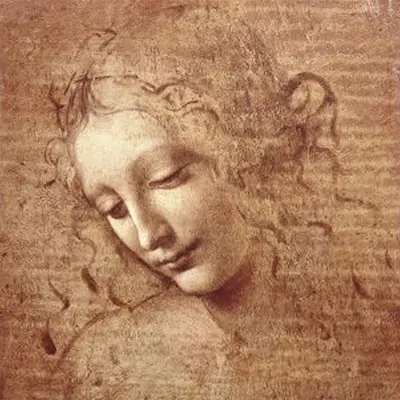Art historians have dated the piece according to its similarity to other works by Leonardo da Vinci and have suggested its creation being around 1500.
La Scapigliata literally translates as ‘dishevelled hair’, perhaps more appropriately capturing the subject matter than the English title.
The wildness of the hair is in sharp contrast to the beautiful face it surrounds. It has been suggested that da Vinci painted the figure in this way to present the woman being inherently beautiful but also with a wild power that could not be tamed.
Ultimately, the woman cannot be reduced to just her beauty. One academic suggests that this could have been da Vinci’s prediction of the future changing role of women in society.
It is possible that this was the study of a model’s face, with da Vinci being interested in anatomical studies, or it has been contended that this was a preliminary sketch of how he intended to paint the Madonna.
The painting has been associated with the works of da Vinci’s mature period. Other paintings of this period include Virgin of the Rocks (dating around 1495-1508) and The Virgin and Child with St Anne and St John the Baptist (either 1499-1500 or 1506-8).
The latter piece is comparable with Head of a Woman. The Virgin and Child is a chalk and charcoal on tinted paper, a different medium to Head of a Woman, but da Vinci uses both mediums in a similar way to capture the human figure.
In both pieces, the faces have a particular softness from the shading and smooth lines that capture the human face with anatomical accuracy. Both also share the wilder and sketchy strokes that surround the faces.
Whilst in Head of a Woman, it was the hair that appears more like a rough drawing in a sketchbook, in The Virgin and Child it is the feet that look far more like a sketch than the realistically detailed faces.
In terms of the medium, whilst Leonardo da Vinci enjoy using many kinds as an artist, he frequently used oil on wood. In fact, this medium was used for his most famous piece (and possibly one of the most famous paintings ever): the Mona Lisa.
Head of a Woman is housed in the Galleria nazionale do Parma, a gallery with a great number of Renaissance pieces.


